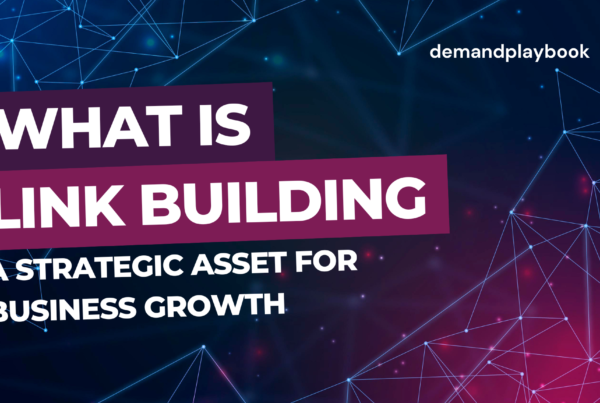Billions of businesses are being run as you read this article—on every scale imaginable. Yet no matter how different these businesses are, one thing is constant: decision-making. This ranges from the mundane decisions lower-level employees make every day to crucial executive decisions that can take years of deliberation and planning.
The people in charge of making decisions that influence business growth are called decision-makers. Nearly every day, these decision-makers have to consider different options to make informed and effective business decisions. Without them, the business might not exist.
In this piece, you’ll learn how business decisions are made, the different types of business decision-makers, and some techniques that help decision-makers make effective decisions.
How Are Business Decisions Made
Decision-making is much more complicated than going to bed at night, ruminating over a couple of options, and waking up with perfect clarity on what to do. In business, decision-making requires you to weigh the pros and cons of suggestions while taking into consideration things like employee well-being and finances. It’s a delicate process that takes time and, sometimes, resources.
Here are the steps good decision-makers take:
- Identify the problem
As a decision-maker, you need to define the problem first before trying to solve it. Keep in mind that the definition of the problem shouldn’t be broad or vague. Instead, it should be as specific as possible. So instead of simply saying, “Our LinkedIn engagement rate has dropped,” go deeper to find out why people aren’t engaging with your content anymore.
Could it be that you’re not getting traffic to your page at all? Or are you getting traffic but no one’s booking a demo call? Perhaps, people are booking demo calls but aren’t converting.
Pinpoint what’s wrong so you can figure out the options available to fix the situation.
- Collect important information about the options available to you
The next step is to consult the team(s) experiencing the problem to get their opinions on the best ways to solve it. As you collect internal information, also consult external sources, including case studies, books, online sources, and research reports. You can also ask for advice from other business professionals and colleagues outside the company.

- Identify the alternatives
After consulting internal and external sources on potential solutions to your problem, you’ll probably be overwhelmed with information. In this case, analyze all the suggestions you get and choose only those that are applicable and relevant to your situation. These will be the alternatives you’ll have to choose from.
For example, if your marketing team feels like they can expand their content marketing beyond just blog posts, other viable options could be video marketing, social media marketing, and paid advertisements.
- Think about the outcome of each option
After laying out all relevant options, analyze them further to predict what the outcome of each one will be. Think about possible scenarios and determine the extent to which each option will solve the issue and help the company achieve its goals.
Also, study other companies who have implemented similar solutions to find out how they made their choice and the results they got from it. This will ensure that you choose the option that has the best chance of solving the problem.
For example, if your company is trying to increase traffic and conversions through social media, your options can be organic social media marketing and paid social media advertising.
The option you choose will be determined by how urgently you need new leads. Organic social media marketing can take a couple of months to bring results, but each successful post can keep bringing results on autopilot without you paying a dime. Paid social advertising, on the other hand, is instant and can bring in tons of traffic (and conversions), depending on how much money you invest in the campaign.
If you need new leads immediately and you have some cash to spare, paid social ads may be the way to go. But if you’re not in a rush or you have a tight budget, you can choose organic social marketing.

- Implement the most effective option
After identifying your problem and weighing all potential options and outcomes, choose the option least likely to fail. This is easier said than done, to be fair, as none of your options might be viable. Or, several of them might seem great all at the same time.
The idea is to iterate through the decision-making process till you find an option that will help you hit your goals. Once you find one, draw up an actionable strategy that the team involved can implement.
Note: You may need to combine two or more options to create the most effective business strategy.
- Monitor and reassess the process, as necessary
As the team implements the new strategy, watch your analytics dashboard closely for how things play out. If things work out the way you expect, you can scale operations. If the results are coming in slowly, you can decide to wait it out or make small changes to improve the outcomes. And if it doesn’t work out at all, you can scrap the strategy before you lose too many resources.
5 Types of Business Decision-Makers
While it may seem like it, not all decision-makers are cut from the same cloth. Different decision-makers have their unique ways of iterating through options and making choices, but most, if not all, fall into one of these five categories:
- Brand-centric
Brand-centric decision-makers focus on improving the company’s brand. The first thing they consider when trying to choose between options is “How will this affect our brand image?” They consider how their decisions affect their customers and the way the customers view the business.
Brand-centric decision-makers are usually deep thinkers and visionaries. They are highly logical, rarely take risks, and respond better to factual arguments than emotional ones. During meetings and online events, brand-centric decision-makers tend to ask a lot of questions, speak carefully, and try to get as much information as possible about their options before making a decision.

- Multifocal
When making decisions, multifocal decision-makers focus on multiple goals or outcomes. They think about making profits and how their decision will affect their brand image.
These decision-makers like to consider different approaches and try new strategies that can benefit the company, in terms of both brand positioning and revenue. They’re open to learning about new business models, revenue streams, and skills that can increase business growth.
While some multifocal decision-makers are prone to Shiny Object Syndrome—enamored by the latest option or suggestion—many of them like to analyze the data before making a decision.
- Aggregator
Aggregators focus largely on creating and executing processes and strategies that help the business garner more leads, sales, and acquisitions. Their main focus is increasing the financial strength of a business.
Because they consult with marketers, analysts, and investors, aggregators have to be accurate, detail-oriented, and organized. During meetings, they like data-backed, fleshed-out explanations of the options available to them so they can make decisions that’ll turn a profit.
While aggregators aren’t big fans of too much uncertainty, they understand that the decisions they make carry some risk. They’re willing to take those risks as long as there’s enough evidence to show that there’s a high chance of success.
- Skeptics
As you might’ve guessed, skeptic decision-makers are generally suspicious of any idea or suggestion that doesn’t align with their existing knowledge or opinions. Skeptics don’t get excited by new ideas like multifocal decision-makers do. Instead, they take their time to analyze all options available to them. For the most part, though, they try to figure out how their own idea trumps other new and untested methods. They prefer continuity over change.
When it seems as though their idea may not win out after all, skeptic decision-makers do a lot of research into other potential solutions to find out which one will work best. They are thorough, detail-oriented, and often domineering in meetings.

- Followers
Just like skeptics, follower decision-makers are cautious and extremely thorough when considering the options available to them. However, they aren’t early adopters. They’ll likely not do something unless they’ve seen it successfully done somewhere else.
That’s why, during deliberations, follower decision-makers rely heavily on reviews, case studies, and well-documented results. They need concrete evidence of the efficiency of an idea before deciding to implement it.
During their research, they like to find examples of reputable organizations that have used similar strategies in the past and gotten great results. Their findings play a huge part in whether they’ll choose an option or not.
Techniques and Tools to Help You Make Business Decisions
As you’ve seen, decision-making is a difficult and time-consuming process, but there are some techniques and tools that can help you organize your—and other people’s—thoughts and make a decision that’s good for the business. Here are some of those techniques and tools:
- Decision matrix
A decision matrix, or decision grid, is a technique that helps you identify and analyze different options for a decision. This tool is useful when you’re trying to decide between multiple options, and there are several factors you need to consider before making a final decision.
Here’s how to create a decision matrix:
- Identify your decision alternatives (or options)
- Identify the factors (or considerations) that affect your decision
- Create your decision matrix. This is a grid (or table) you can use to compare the considerations with the alternatives you have.
Say you want to choose between three email marketing tools for your business, and you’re factoring in features, cost, and customer reviews. Here’s what your decision matrix will look like:
| Features | Cost | Customer reviews | Score | |
| Tool 1 | ||||
| Tool 2 | ||||
| Tool 3 |
- Establish a rating system for assessing the value of each option and factor. You can use a scale of 1 – 5, 5 being the best.
- Fill in your decision matrix. Without a decision matrix, your conclusion for each tool and factor may look like this:
- Tool 1 has a wide range of features, is very expensive, and has a 4.8-star review.
- Tool 2 has limited features and is cost-effective, but has a 3.5-star review.
- Tool 3 has some features we need and some we might not use, is cost-effective, and has a 4.3-star review.
These three conclusions are similar so it’s a bit difficult to decide the best choice, especially because each tool has its pros and cons. With a decision matrix, however, it’s easier to see which tool is the best choice when they’re all ranked from 1-5, with 5 being the best.
| Features | Cost | Customer reviews | Score | |
| Tool 1 | 5 | 1 | 5 | |
| Tool 2 | 1 | 5 | 2 | |
| Tool 3 | 4 | 4 | 4 |
- Add weights. Some considerations are more important than others so assign a number between 1-3 (or 1-5, depending on how many options you have) with 3 being the most important. Here’s what that looks like
| Features (weight: 3) | Cost (weight: 2) | Customer Reviews (weight: 3) | Score | |
| Tool 1 | 5 | 1 | 5 | |
| Tool 2 | 1 | 5 | 2 | |
| Tool 3 | 4 | 4 | 4 |
- Multiply the weight by each consideration or option. This ensures that the more important considerations have more weight than the less important ones.
| Features (weight: 3) | Cost (weight: 2) | Customer Reviews (weight: 3) | Score | |
| Tool 1 | 5 x 3 = 15 | 1 x 2 = 2 | 5 x 3 = 3 | |
| Tool 2 | 1 x 3 = 3 | 5 x 2 = 10 | 2 x 3 = 6 | |
| Tool 3 | 4 x 3 = 12 | 4 x 2 = 8 | 4 x 3 = 12 |
- Calculate the total score.
| Features (weight: 3) | Cost (weight: 2) | Customer Reviews (weight: 3) | Score | |
| Tool 1 | 5 x 3 = 15 | 1 x 2 = 2 | 5 x 3 = 3 | 20 |
| Tool 2 | 1 x 3 = 3 | 5 x 2 = 10 | 2 x 3 = 6 | 19 |
| Tool 3 | 4 x 3 = 12 | 4 x 2 = 8 | 4 x 3 = 12 | 32 |
Tool 3 has the highest score in the decision matrix so that’s the one you should go with. Even though Tool 2 was cheaper, the average cost of Tool 3 combined with the features and good customer reviews makes it the best option for your business.
- Decision tree
A decision tree is a flowchart or graph that starts with a single idea (or question) and branches out with the potential outcomes of each decision or option. This tool helps you comprehend problems better and weigh eventual actions based on outcomes and risks. This way, you can figure out the best course of action to take.
Here’s how to create a decision tree:
- First, identify the main issue, idea, or question you want to explore. If you’re trying to launch a paid advertising campaign, that’s your main issue.
- Expand your decision tree by adding potential decisions and outcomes. Say you want to decide between paid search ads and paid social media ads. Here’s what your decision tree will look like:
- Continue expanding each decision in your tree until you reach an endpoint. This ensures that you’re considering all possible outcomes of the decision. Continuing our example, you’ll consider the cost of both ad options, how much you stand to lose, and how much you stand to gain based on the amount of money you invest.
- Calculate the numbers to determine risk and reward. From our example, we know that if you use paid search, your initial cost will be higher, but the reward is greater than paid social— if you succeed. But if you don’t, you stand to lose twice the money you invested.
On the flip side, you can run paid social ads with slightly less money, but you’ll get less reward than if you use paid search ads. But if you don’t succeed with paid social ads, you’ll lose only 62.5 percent of your initial investment.
- Evaluate outcomes. From the decision tree, you can see that paid social ads are the better option. While paid search has the best outcome if done well, it carries an expensive initial investment and higher risk than the second option.
- Pareto analysis
Pareto analysis is a decision-making technique that separates several desirable and undesirable input factors, which have the greatest impact on an outcome.
This technique is also known as the 80/20 rule because it’s based on the idea that 80% of a project’s benefit can be achieved by doing only 20% of the work. Conversely, 80% of problems can be caused by 20% of the elements involved. For example, 80% of a business’s revenue comes from only 20% of its customers.
This technique is most handy when you’re trying to make many decisions because it helps you prioritize which ones to make first by determining which decisions will have the most significant impact.
- SWOT analysis
A SWOT analysis is a tool used to analyze the internal and external factors that impact the growth of a business, namely its Strengths, Weaknesses, Opportunities, and Threats.
When you’re planning to make a significant business decision, a SWOT analysis helps you figure out the following:
- Your strengths. What does your company do better than its competitors? What parts of your business do your customers love most?
- Your weaknesses. In what areas can your company improve? Think about the internal factors that hurt your business.
- Your opportunities. How can you leverage your strengths to create new openings for your business? What weaknesses can you eliminate to make up a new opportunity for your company? What demand are your competitors not fulfilling that your company can?
- Your threats. What external challenges stand in the way of achieving your business goals? This could be anything from inflation to politics.
The information you garner from a SWOT analysis can guide you in the right direction. To get a comprehensive SWOT chart, ask for the opinions of your team members and stakeholders. Involving them in the process makes it easier to identify your strength, weaknesses, opportunities, and strengths, and spot patterns between the four quadrants.
Become a Better and More Effective Decision-Maker
Decision-making is a nuanced process that requires decision-makers to be accommodating of viable alternatives, and objectives while choosing the best option for the business. Knowing the kind of decision-maker you are and existing decision-making techniques can help you make better decisions for your business in all aspects, be it employing new staff, reaching new people, or increasing sales.



